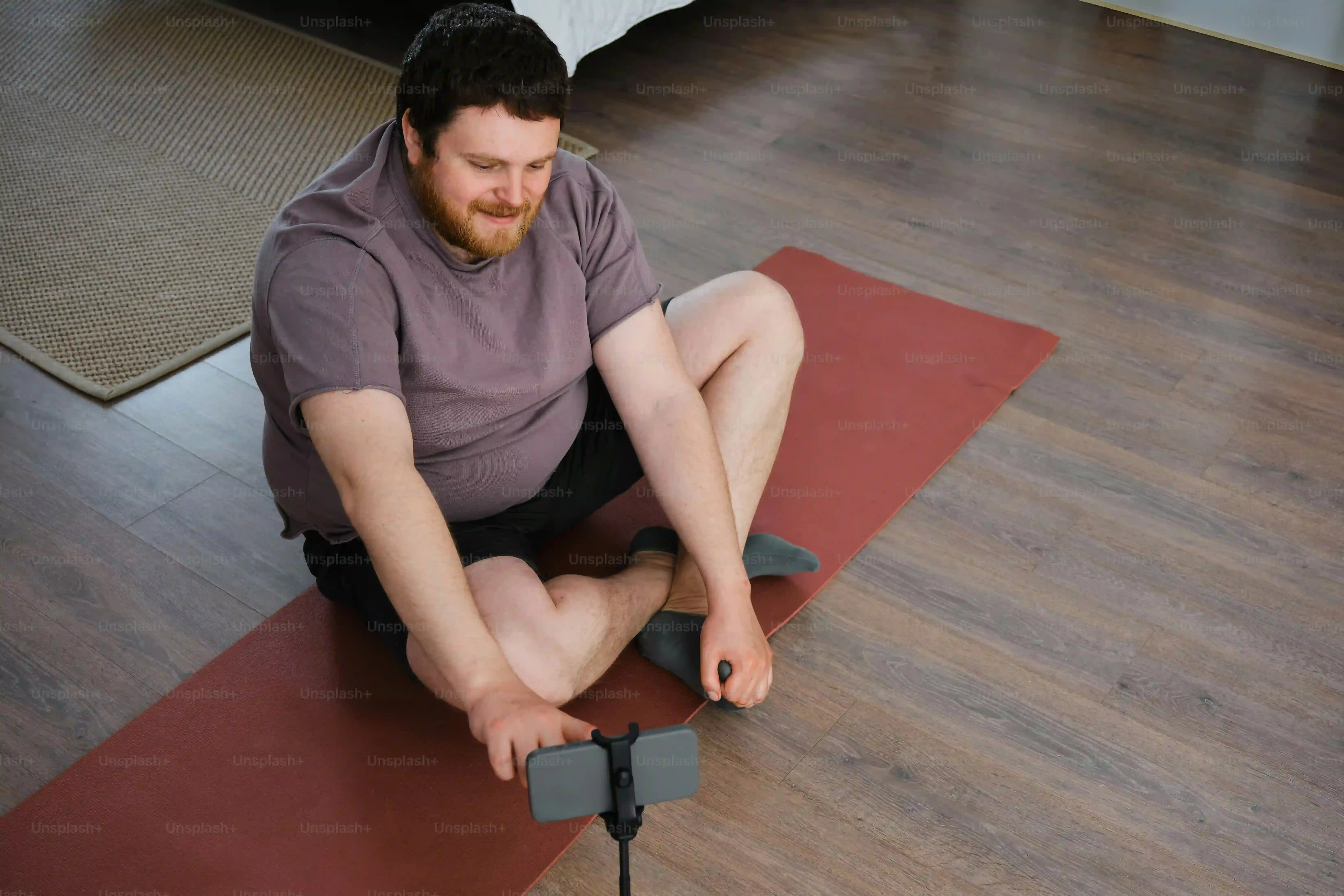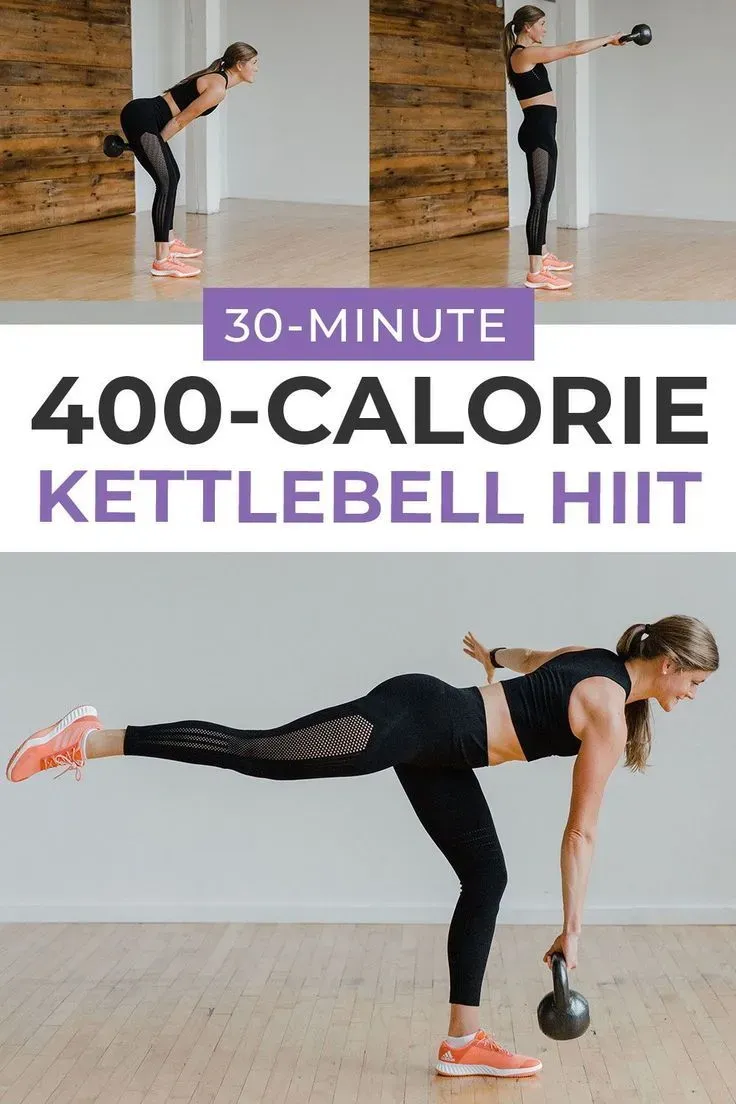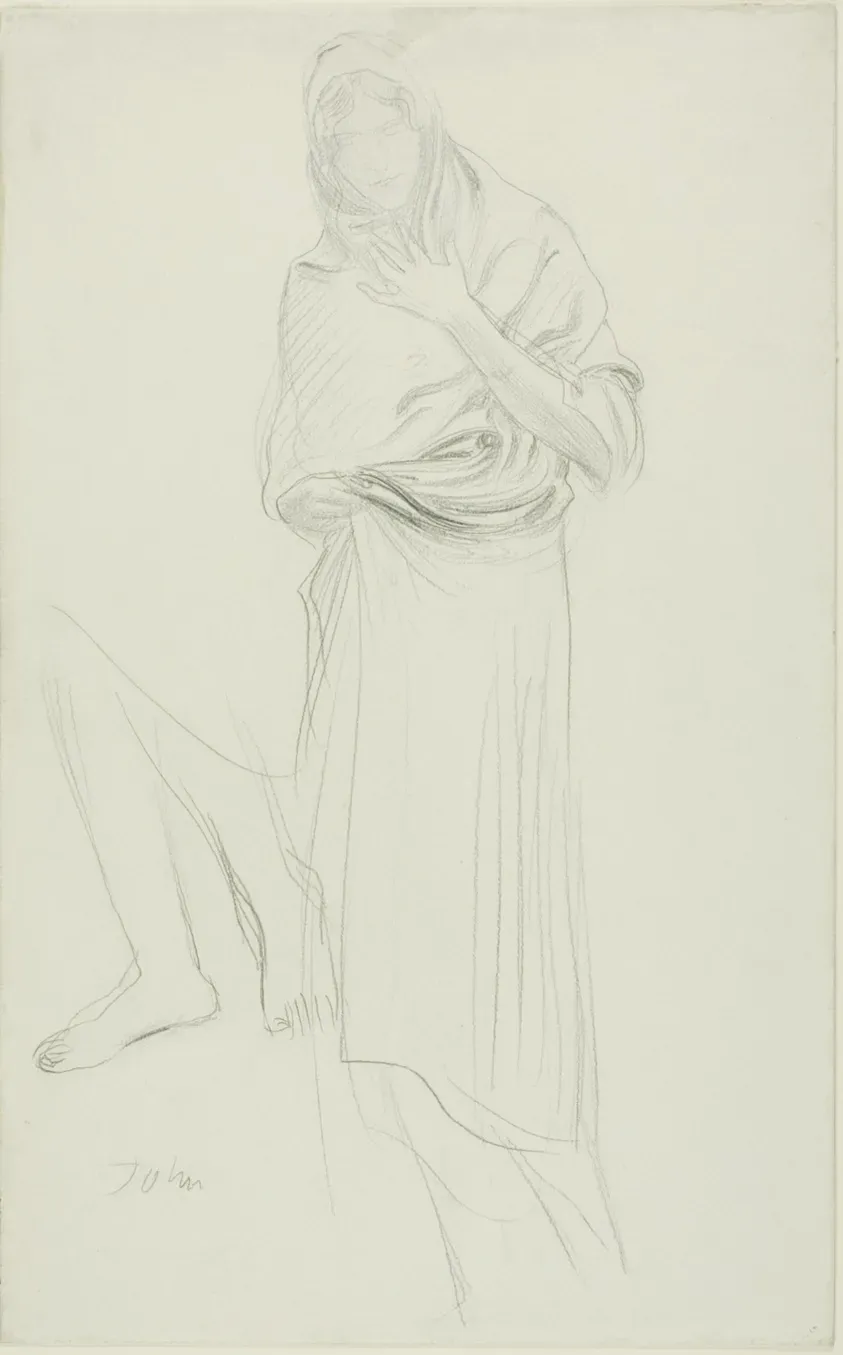Table of Contents
Let's be honest. Building strong, powerful legs often feels like it requires a gym membership and enough iron to sink a small boat. But what if you're short on space, time, or just prefer training at home? Does that mean your lower body is doomed to mediocrity? Absolutely not. You can forge serious leg strength and muscle with surprisingly little equipment. The secret weapon? A single kettlebell. That's right, mastering a solid one kettlebell leg workout can be your ticket to bypassing crowded racks and complicated machines while still getting brutal, effective results. Forget the excuses about needing a full squat rack or leg press. We're going to cut through the noise and show you exactly how to leverage this versatile tool to challenge your quads, hamstrings, glutes, and even your core. Ready to ditch the gym commute and build a foundation of lower body power with just one piece of equipment? Let's get to work.
Why a One Kettlebell Leg Workout is a Game Changer

Why a One Kettlebell Leg Workout is a Game Changer
Ditching the Iron Jungle for Focused Power
Look, we've all seen the guy hogging the leg press for an hour, stacking plates like he's building a new skyscraper. That approach works for some, sure, but it's far from the only path to strong legs. A one kettlebell leg workout strips away the unnecessary complexity and focuses on fundamental movement patterns with a single, dynamic tool. This isn't just about convenience; it forces you to engage stabilizer muscles in a way fixed machines simply can't. When you're balancing a kettlebell during a lunge or deadlift, your core and smaller hip muscles are working overtime to keep you upright and controlled. It’s less about moving maximum weight and more about moving *well* under load.
More Than Just Strength: Building Resilient Legs
Going beyond brute force, incorporating a one kettlebell leg workout helps build resilience. The dynamic nature of kettlebell exercises, especially swings or cleans, introduces a ballistic element that improves power and coordination. Think about real life – you rarely move weight in a perfectly stable, fixed path. Picking up groceries, running for the bus, or playing with your kids all require your legs to handle load while moving and stabilizing. A single kettlebell trains your body to handle these real-world demands, making your legs not just strong, but functionally robust. It's about creating legs that perform, not just pose.
Key Advantages of a One Kettlebell Leg Workout
- Trains stability alongside strength
- Excellent for improving balance and coordination
- Highly versatile for various movement patterns
- Requires minimal space and equipment
- Promotes better body awareness
Targeting Your Legs Effectively with Just One Kettlebell

Targeting Your Legs Effectively with Just One Kettlebell
Why One Kettlebell Isn't a Limitation, It's a Focus
so you've got one kettlebell. Maybe it's a 16kg, maybe a 24kg, doesn't matter right now. The point is, you're not staring down a rack of dumbbells or a fancy leg extension machine. This isn't a drawback; it's a design feature. A one kettlebell leg workout forces you to think differently. Instead of just adding more weight to basic bilateral movements, you start exploring variations and single-leg work that hit your muscles in new ways. It makes you pay attention to balance, control, and how your body moves under load. You learn to make the most of the weight you have, focusing on tempo, range of motion, and unilateral strength.
Hitting All Angles: Squats, Hinges, and Lunges
Even with just one bell, you can effectively target all the major muscle groups in your legs – quads, hamstrings, glutes, and even calves. The key is hitting the fundamental movement patterns: squatting, hinging, and lunging. A goblet squat with one kettlebell is a fantastic way to load the quads and glutes while keeping your torso upright. Deadlift variations, like the single-leg or suitcase deadlift, hammer the hamstrings and glutes. Lunges in various directions – forward, reverse, lateral – challenge your legs unilaterally and improve hip stability. A smart one kettlebell leg workout incorporates these core patterns.
Movement Pattern | Key Muscles Targeted | Example One Kettlebell Exercise |
|---|---|---|
Squat | Quads, Glutes, Hamstrings | Goblet Squat |
Hinge | Hamstrings, Glutes, Lower Back | Single-Leg Deadlift |
Lunge | Quads, Glutes, Hamstrings, Hip Stabilizers | Reverse Lunge (Suitcase Hold) |
Making it Challenging: Density and Unilateral Loading
So, how do you keep progressing with just one kettlebell? Two main ways: density and unilateral work. Density means doing more work in the same amount of time, or the same amount of work in less time. You can shorten rest periods or add reps/sets. Unilateral loading is where the magic really happens in a one kettlebell leg workout. Holding the bell in one hand during a lunge or deadlift dramatically increases the core and hip stabilization demands on the opposite side. This isn't just about making the exercise harder; it helps fix imbalances and builds the kind of real-world strength we talked about earlier. It's surprisingly brutal and effective.
The Power of SingleLeg Moves in Your One Kettlebell Leg Workout

The Power of SingleLeg Moves in Your One Kettlebell Leg Workout
Why Single-Leg Work Isn't Optional, It's Essential
let's talk about single-leg training. If your current one kettlebell leg workout only involves exercises where both feet are firmly planted, you're missing out on a huge chunk of potential. Think about it: when do you ever use both legs equally at the exact same time in daily life? Walking, running, climbing stairs, kicking a ball – it's all unilateral movement. Training one leg at a time exposes and helps fix imbalances between your left and right sides. Most people have a dominant leg, and ignoring this asymmetry is like driving a car with uneven tire pressure – eventually, something's going to wear out faster on one side. Single-leg kettlebell exercises force each leg to work independently, building balanced strength and stability from the ground up.
Balancing Act: Building Stability and Control
Adding load to a single-leg stance, especially with a kettlebell swinging or held in one hand, turns simple movements into complex challenges. Your ankles, knees, hips, and core all have to work harder to stabilize you. This isn't just about looking steady; it builds functional strength that translates directly to improved athletic performance and reduced risk of injury. Ever feel wobbly during a heavy squat? Often, the issue isn't just leg strength but a lack of stability in the supporting joints and core. A well-programmed one kettlebell leg workout heavy on unilateral moves addresses this head-on. It teaches your body to control weight in less stable positions, which is invaluable both in and out of the gym.
- Single leg work improves balance and proprioception.
- It helps identify and correct muscle imbalances.
- Demands greater core engagement for stabilization.
- Builds functional strength for real-world movements.
- Allows you to get a significant training effect with less weight.
The Brain-Body Connection: Neurological Demands
Beyond the muscles, single-leg exercises are neurologically demanding. Coordinating balance, stability, and force production on one limb requires serious communication between your brain and muscles. This isn't just busywork for your nervous system; it builds better movement patterns and enhances overall control. Because they are so demanding on the nervous system, it's often smart to place your primary single-leg exercises near the beginning of your one kettlebell leg workout when you're fresh. Trying to nail pistol squats or heavy single-leg deadlifts when your brain is already fried from bilateral work is a recipe for frustration, or worse, poor form leading to injury. Train smart, train unilaterally.
Essential Exercises for Your One Kettlebell Leg Workout

Essential Exercises for Your One Kettlebell Leg Workout
Building Your Base: Squats and Hinges
Alright, so you've got your single bell. Where do you even start? You begin with the fundamentals, the bread and butter of any solid one kettlebell leg workout. The goblet squat is non-negotiable. Holding the bell at your chest forces you to stay upright, keeps your torso engaged, and gives you a great feel for squat depth. It's fantastic for hitting the quads and glutes without crushing your spine. Then there's the hinge pattern, crucial for hamstring and glute development. While a two-kettlebell deadlift is a beast, a single kettlebell suitcase deadlift (holding the bell in one hand by your side) or even a single-leg Romanian deadlift variation (RDL) allows you to load the hinge effectively. These build powerful posterior chains and teach you how to move from your hips, not your back.
- Goblet Squat: Builds foundational squat strength, improves mobility.
- Suitcase Deadlift: Hits the hinge pattern, challenges core stability.
- Single-Leg RDL: Develops unilateral hamstring/glute strength, improves balance.
- Kettlebell Swings: Ballistic hinge for power and conditioning.
Stepping Up: Unilateral Powerhouses
Now we get into the real meat of a one kettlebell leg workout: unilateral movements. The reverse lunge is your best friend here. Holding the kettlebell in the opposite hand of the stepping leg (contralateral loading) jacks up the demand on your core and hip stabilizers. It's also generally easier on the knees than forward lunges. The single-leg deadlift, or RDL, is another absolute killer. Standing on one leg and hinging at the hip with the kettlebell in the opposite hand requires serious balance and hammers the glute and hamstring of the working leg. It highlights any side-to-side imbalances you might have, forcing you to address them head-on. These aren't just single-leg versions of bilateral lifts; they are distinct movements with unique benefits for stability and balanced strength.
Exercise | Focus | Kettlebell Position |
|---|---|---|
Reverse Lunge | Quad, Glute, Hip Stability | Suitcase (opposite hand) or Goblet |
Single-Leg Deadlift (RDL) | Hamstring, Glute, Balance | Suitcase (opposite hand) |
Bulgarian Split Squat | Quad, Glute, Hip Flexor Mobility | Suitcase, Goblet, or Rack |
Advanced Challenges: Pistols and Power
Once you've built a solid base with squats, hinges, and lunges, you can start exploring more advanced movements within your one kettlebell leg workout. The pistol squat is the king of unilateral leg strength and mobility. It's incredibly demanding, requiring significant ankle mobility, knee stability, hip strength, and balance. Don't expect to nail it overnight; progress using regressions like holding onto a post, squatting to a box, or using counterweight with the kettlebell out front. Kettlebell swings, while primarily a hinge, are also essential for developing explosive power in the hips and hamstrings, which directly translates to stronger squats and deadlifts and overall athleticism. Incorporating swings can turn your workout into a metabolic challenge too.
Your Complete One Kettlebell Leg Workout Routine

Your Complete One Kettlebell Leg Workout Routine
so we've talked about why a one kettlebell leg workout is legit, how a single bell isn't a handicap, and why single-leg moves are your secret weapon. Now, let's tie it all up. How do you actually structure a complete one kettlebell leg workout that hits everything effectively? It’s not just about picking exercises at random; it's about building a routine that progresses logically, challenges your muscles and nervous system, and fits into your schedule. Think of it like building a house – you need a solid foundation before you start worrying about the fancy trim. We'll lay out a template you can follow, adjusting the weight and intensity as you get stronger, ensuring your one kettlebell leg workout is always pushing you forward without breaking you down.
Mastering Form and Progression

Mastering Form and Progression
Mastering Form and Progression
so you've got the exercises down. You're doing goblet squats, swinging the bell, maybe even attempting some single-leg RDLs. But here's the kicker, and honestly, where most people fall short: form is everything. Especially with a one kettlebell leg workout, where you're often dealing with asymmetrical loads and balance challenges, sloppy reps are just an express ticket to tweak city. Don't chase heavier weight if your current weight looks like a hot mess. A perfect rep with a lighter bell is infinitely more valuable than a grimace-inducing struggle that barely resembles the exercise. Get video of yourself, ask a knowledgeable friend, whatever it takes. Nail the movement pattern first. Only then do you start talking about adding weight, or more likely with a single bell, adding reps, sets, or decreasing rest.
- Focus on controlled movement, not just lifting the weight.
- Maintain a neutral spine, especially during hinges and deadlifts.
- Keep your core braced throughout each exercise.
- Ensure your knee tracks over your foot during squats and lunges.
- Listen to your body; pain is not just weakness leaving the body, sometimes it's a warning sign.
Your Legs, One Kettlebell, Zero Excuses
So there you have it. We've covered the 'why' and the 'how' of building serious lower body strength with just one kettlebell. Forget the notion that you need a gym packed with shiny machines to get results. A single kettlebell, combined with smart exercise selection and consistent effort, provides a brutal and effective challenge for your quads, hamstrings, glutes, and everything in between. Focus on nailing the form, push your limits safely, and embrace the simplicity. This one kettlebell leg workout isn't just a fallback option; it's a legitimate path to powerful, resilient legs, proving that sometimes, less truly is more.